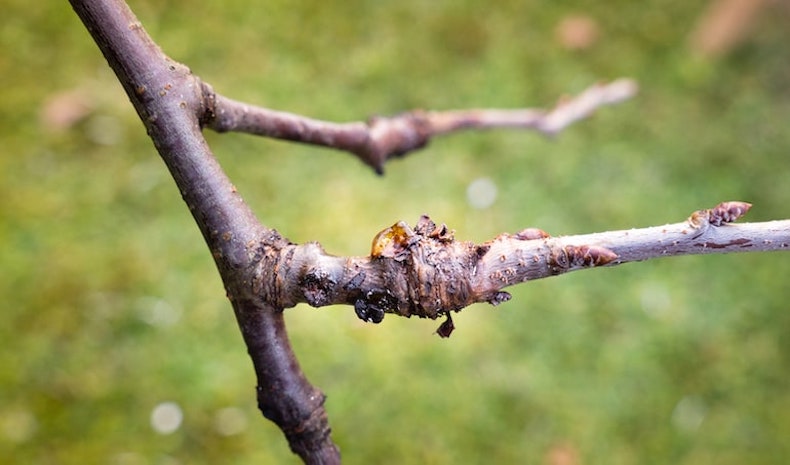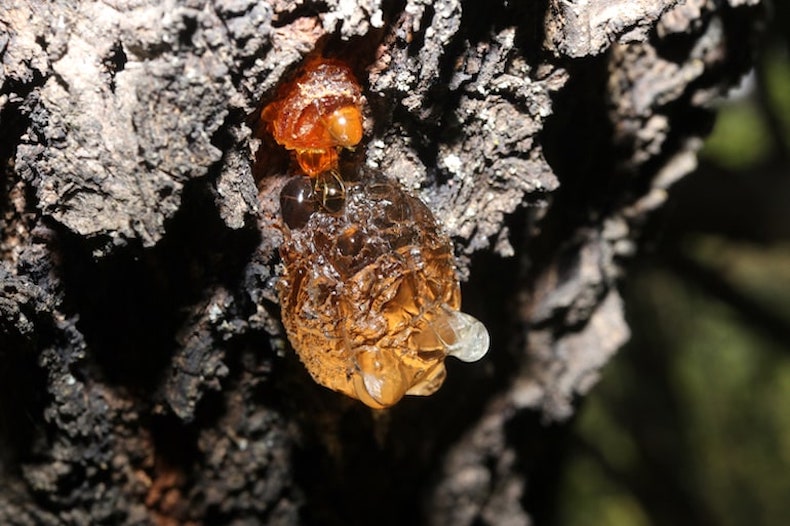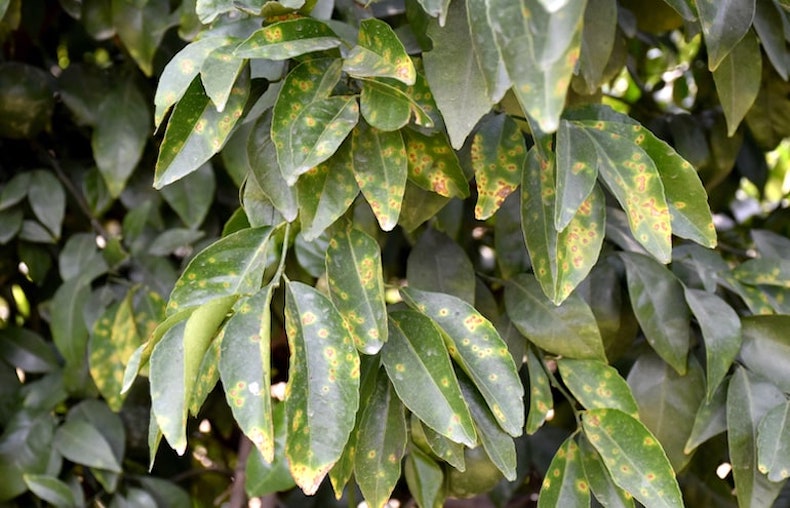Garden diseases - Bacterial canker

Bacterial canker can seriously damage stone-fruit trees
Image: Floki/Shutterstock
Bacterial canker is a disease affecting apricots and other stone fruit trees. As with all plant infections, prevention is better than cure. Here we explain how best to protect your trees from canker, and what to do if your plants do contract it.
What is bacterial canker?

Gummosis on tree bark is a clear sign of infection
Image: photowind/Shutterstock
Pseudomonas syringae pv. morsprunorum and P. s. pv. syringae are the two main culprits which cause canker. They’re actually quite weak bacteria which, when they infect strong, vigorous trees don’t do much damage.
Nevertheless, canker is a serious problem affecting leaves, twigs and boughs and, unless your trees are in good condition, can kill branches and even whole trees. Canker is airborne and often attacks trees through pruning wounds.
How do I tell if my tree has canker?

Check the leaves on your trees for brown spots
Image: Dr. Visvash Vaibhav/Shutterstock
Telltale signs that your fruit trees are infected with canker start to show up from mid-spring onward. Look out for:
- Dead, sunken areas of bark which ooze sticky gum
- Shoots which grow normally at first before rapidly dying-back
- Leaves developing brown spots which die and fall away to give a “shothole” appearance.
If canker rings the bark, that branch will die. Likewise, if it surrounds the tree trunk, sadly, you’re looking at a dead tree.
How to treat bacterial canker

Cutting back is the only way to prevent the spread of bacterial canker
Image: Huw Richards
Once your tree has bacterial canker, there’s little you can do to treat the problem other than to cut away diseased material until you reach healthy wood. Be sure to paint the new wound with wound treatment to prevent reinfection before disposing of diseased offcuts by burning or removal from site. Do remember to sterilise saws and secateurs after use.
Canker begins in autumn, often infecting trees when they’re pruned before lying dormant through the winter months, only damaging the tree when it begins its growth phase. Pruning during the summer when the tree is at its strongest much reduces the chance of infection.
Some varieties of stone fruit trees offer higher levels of canker resistance than others; if you’re investing in new fruit trees, it’s well worth doing some research before deciding which to buy.
Other pages you might like
See all pests & diseases guides
Individual guides
Diseases
- Apple scab
- Blackleg
- Blossom wilt
- Botrytis
- Brown rot
- Clematis wilt
- Downy mildew
- Fungal disease
- Honey fungus
- Leaf scorch
- Leaf spot
- Leek rust
- Lily disease
- Peach leaf curl
- Pear rust
- Phytophthora root rot
- Potato & tomato blight
- Powdery mildew
- Silver leaf fungus
- Tomato greenback
- Tomato leaf curl
- Tomato stem canker







